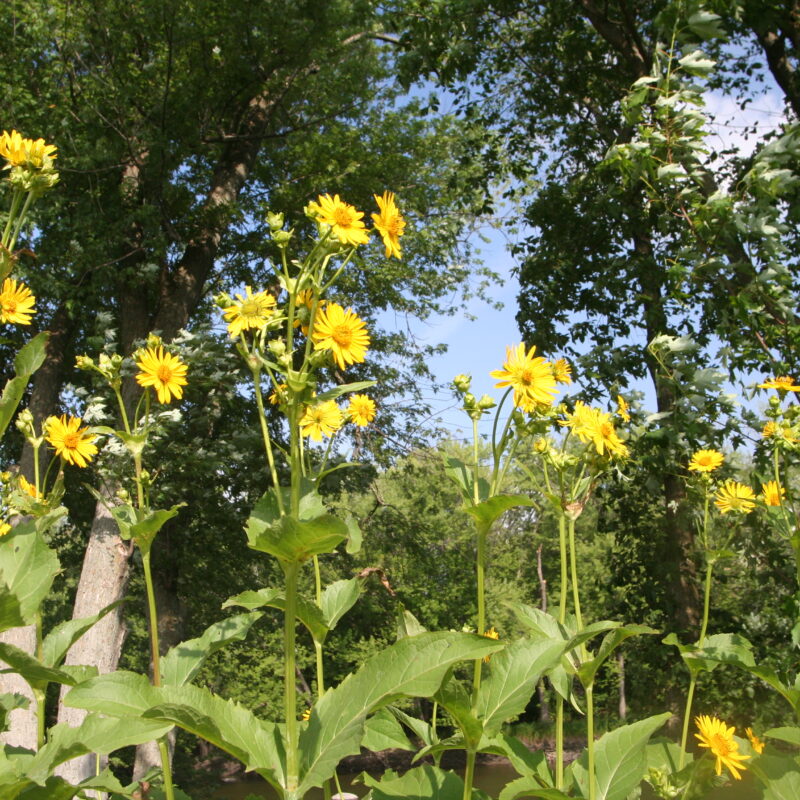Cup PlantSilphium perfoliatum
A robust, native, perennial herb, usually 4-6' tall, with sunflower-like heads up to 4" across and unique leaves that form a "cup" that holds rainwater, hence its common name. Used in wetland and prairie restorations. It has also been used for shoreline, buffer and vegetated swale and stabilization. It is also an ideal plant for the background of rain water gardens.
USDA symbol: SIPE2
General Information
| Plant Type | Forb |
|---|---|
| Height | 8 to 10 feet |
| Light Exposure | Sun |
| Soil Moisture | Dry |
| Bloom Color | Yellow |

Tolerances
| Flooding / Inundation Tolerance | Moderate |
|---|---|
| General Resilience | 10 |
| Salt Tolerance | Medium |
| Stress Tolerance | General Disturbance |
Pollinator Value: Very High
| Bloom Months | July to September |
|---|---|
| Larval Host of | Moths |
| Specific Pollinators Hosted | Eucosma giganteana, Papaipema silphii, Tabenna silphiella |
| Pollinator Benefit | Insect Pollinated, Provides Nectar, Stem Nesting, Supports Generalists |
Project Planning
| Project Type | Boulevard, Erosion Control, Rain Garden, Restoration, Sandy or Engineered Soils, Upland Buffer |
|---|---|
| Coefficient of Conservatism | 5 |
| Herbivore Sensitivity | Low |
| Lifespan | Perennial |
| Rate of Spread | Slow |
| Soil Stabilization | Shallow |
| Vegetative Reproduction | Clonal |
Range
| County | Anoka, Big Stone, Blue Earth, Brown, Carver, Cottonwood, Dakota, Dodge, Faribault, Fillmore, Freeborn, Goodhue, Hennepin, Houston, Jackson, Kandiyohi, Lac qui Parle, Le Sueur, Lincoln, Lyon, Martin, Meeker, Mower, Murray, Nicollet, Nobles, Olmsted, Pine, Pipestone, Ramsey, Redwood, Rice, Rock, Scott, Sherburne, Sibley, Stevens, Swift, Wabasha, Waseca, Washington, Watonwan, Winona, Wright, Yellow Medicine |
|---|---|
| Ecoregion | Driftless Area, Lake Agassiz Plain, North Central Hardwood Forests, Northern Glaciated Plains, Northern Lakes and Forests, Western Cornbelt Plains |
| Approximate Eco Province | Eastern Broadleaf Forest, Laurentian Mixed Forest, Prairie Parkland, Tallgrass Aspen Parklands |
